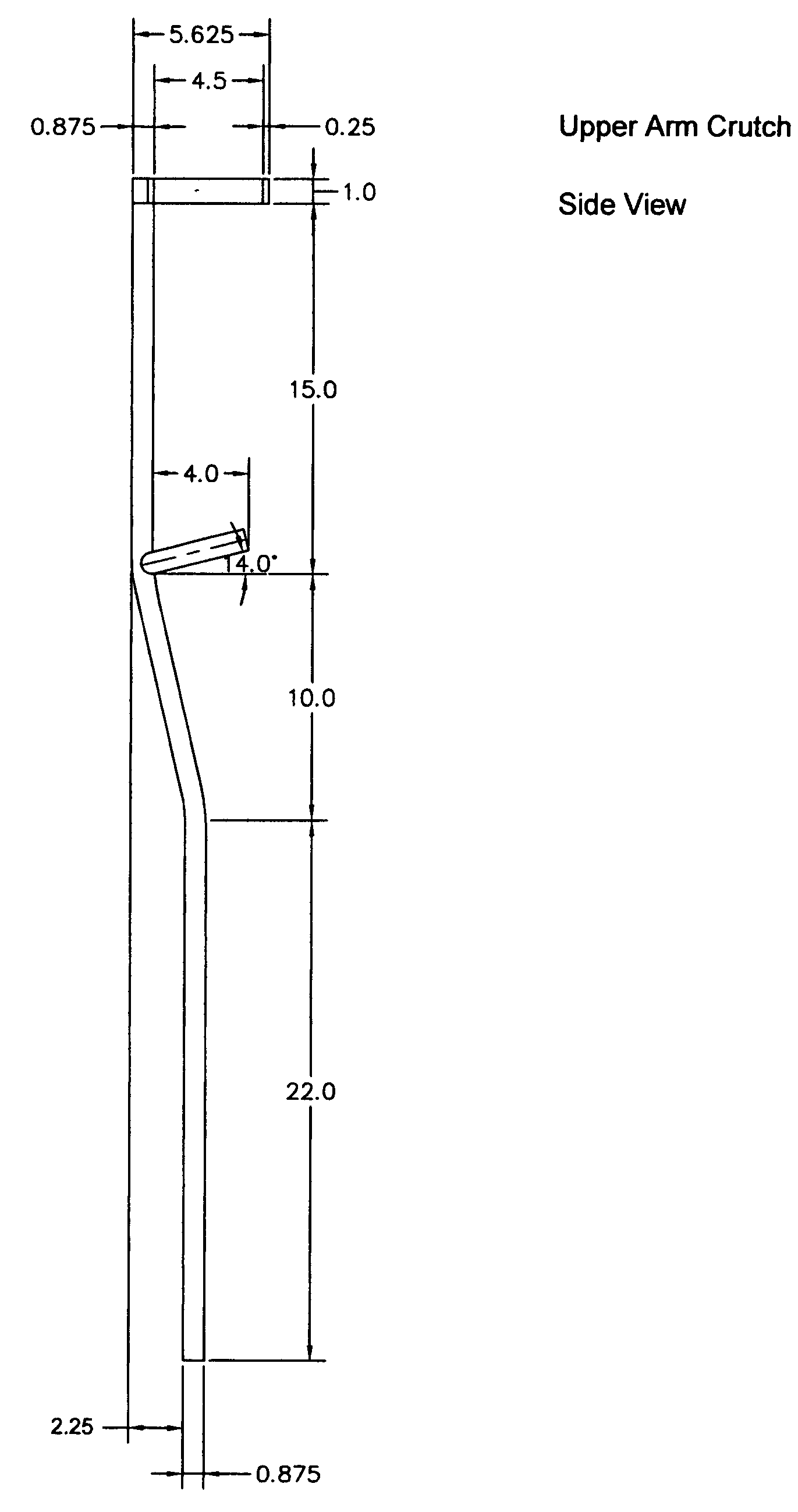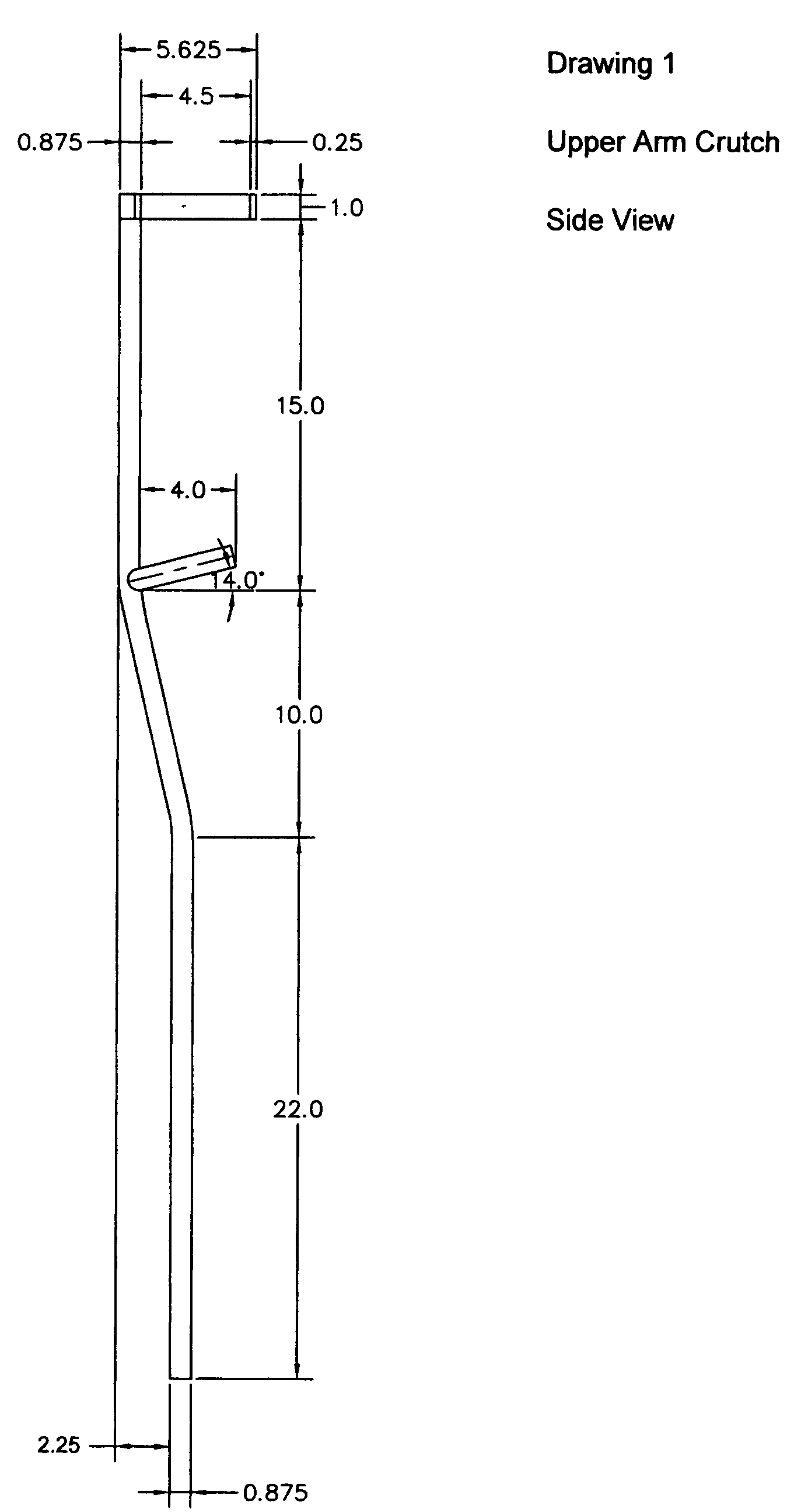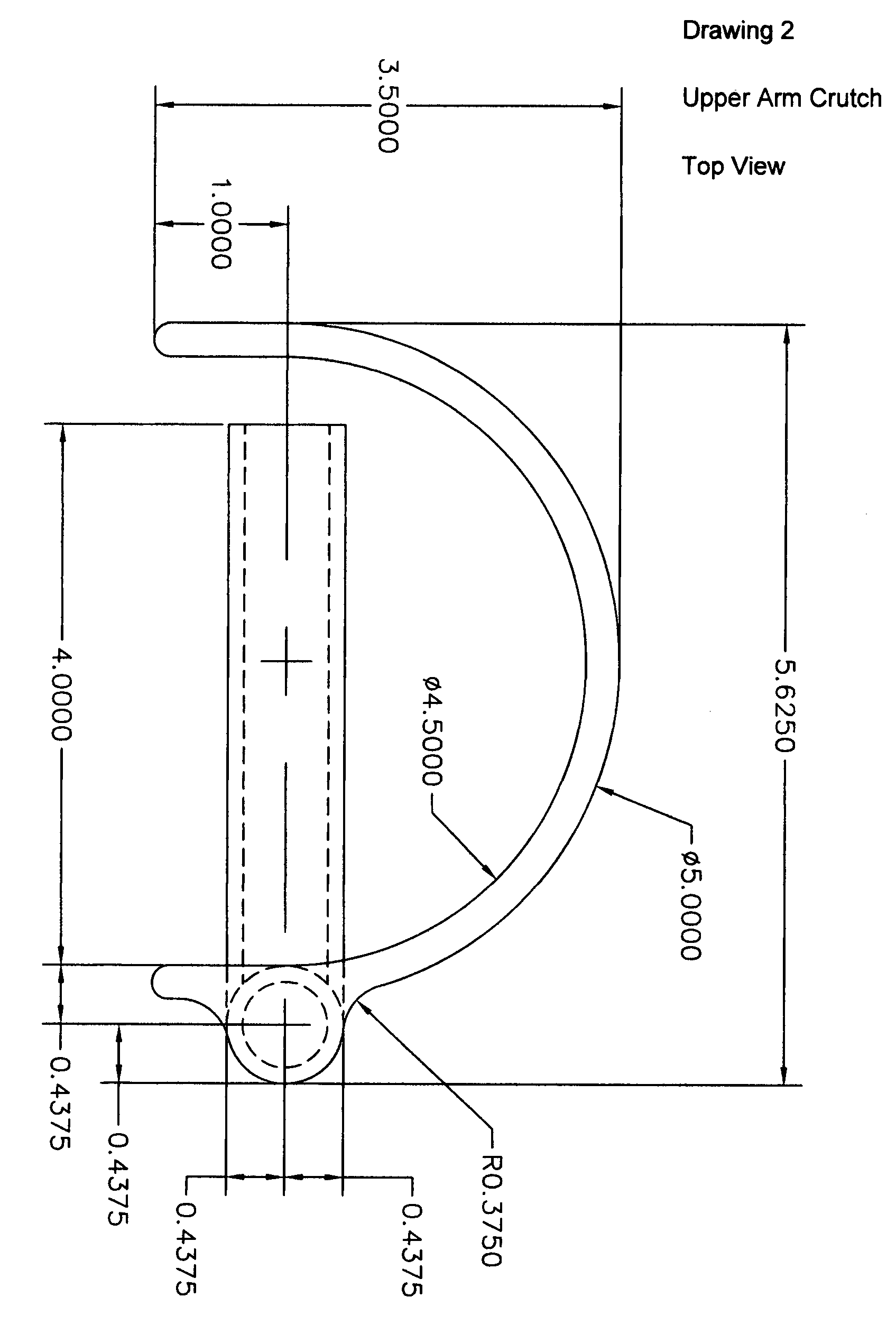Upper arm crutch
a technology of upper arm and upper arm, which is applied in the field of upper arm crutches, can solve the problems of no way to apply compensating leverage to stop the skid, the underarm crutch does not permit the user's weight, and the design suffers from several significant deficiencies, so as to achieve the effect of reducing the inherent deficiencies of the underarm crutch, and reducing the risk of injury
- Summary
- Abstract
- Description
- Claims
- Application Information
AI Technical Summary
Benefits of technology
Problems solved by technology
Method used
Image
Examples
Embodiment Construction
[0030]The invention, referred to as the Upper Arm Crutch, is intended to mitigate the deficiencies of the traditional underarm crutch and forearm crutch, while simultaneously being easily fabricated. Disregarding commonly install appurtenances, such as crutch tips, or rubber hand grips, the Upper Arm Crutch is assembled from only three basic parts, the vertical component, the handle, and the C shaped arm band.
[0031]The components of the Upper Arm Crutch can be composed of any material commonly employed in the fabrication of crutches, such as metal, wood, or plastic. The prototype Upper Arm Crutch was constructed using aluminum tubing. The arm band was machined from a solid billet of aluminum plate.
[0032]The first step in the process is to fabricate the vertical component with a dogleg bend, such that the upper portion of the vertical component is offset to one side of the lower portion by two and a quarter inches. Refer to drawing number 1 for the location of the bends in the vertic...
PUM
 Login to View More
Login to View More Abstract
Description
Claims
Application Information
 Login to View More
Login to View More - R&D
- Intellectual Property
- Life Sciences
- Materials
- Tech Scout
- Unparalleled Data Quality
- Higher Quality Content
- 60% Fewer Hallucinations
Browse by: Latest US Patents, China's latest patents, Technical Efficacy Thesaurus, Application Domain, Technology Topic, Popular Technical Reports.
© 2025 PatSnap. All rights reserved.Legal|Privacy policy|Modern Slavery Act Transparency Statement|Sitemap|About US| Contact US: help@patsnap.com



